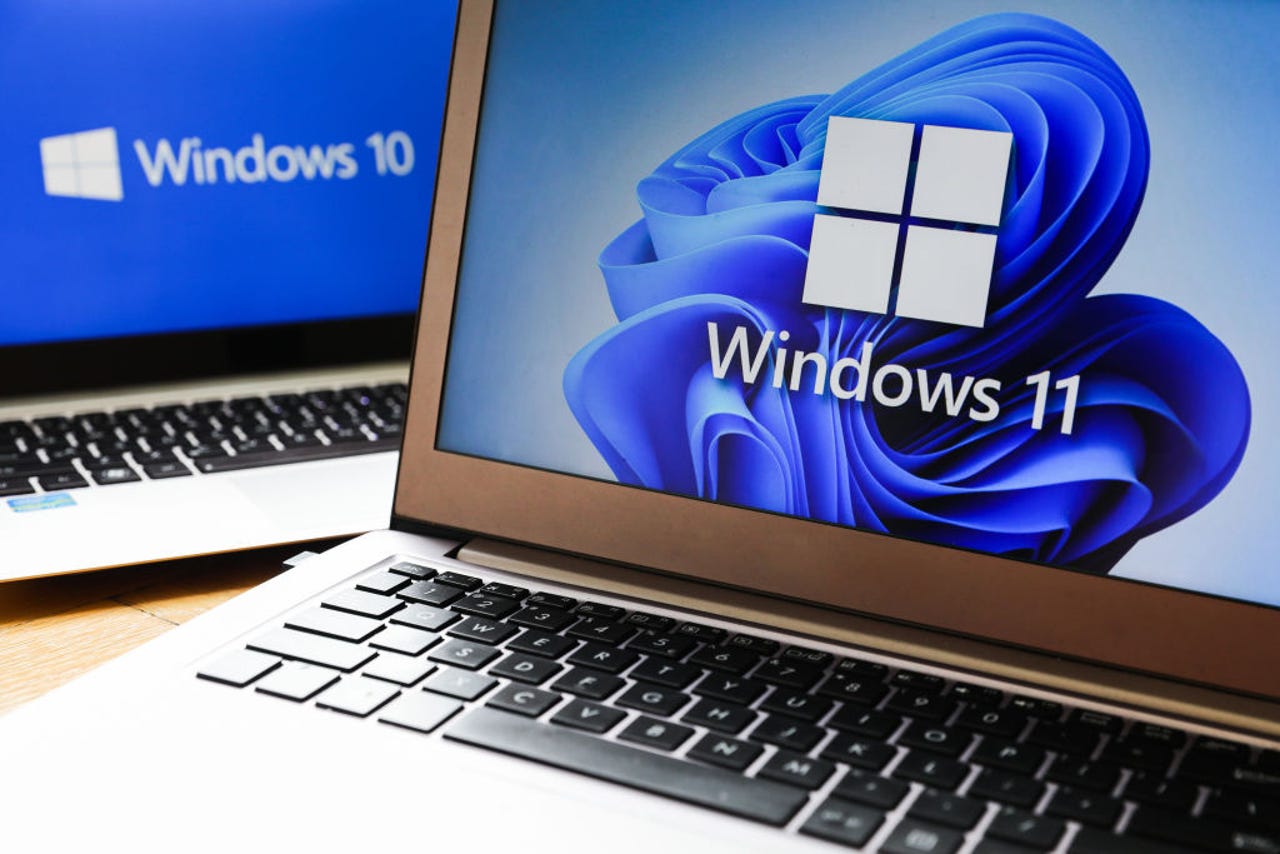
































If this is a new PC that came with Windows 11 preinstalled, you might want to think twice about whether you really want to do this.
NurPhoto/Getty ImagesVirtually all new PCs sold in the retail channel today come preinstalled with Windows 11. The hardware was designed to work with Microsoft's latest operating system, and most models built for the consumer market don't offer the option to install the older Windows 10. (PCs made for the enterprise market sometimes offer this option, but the price tag for these business-class PCs is typically higher.)
If you really don't like Windows 11, can you buy one of those new PCs and downgrade it to Windows 10? Well, sort of.
Also: The best Windows laptop models: Comparing Dell, Samsung, Lenovo, and more
Although you can easily upgrade a Windows 10 PC to Windows 11, preserving installed apps, settings, and data files, you can't do the reverse. If you want to "downgrade" from Windows 11 to Windows 10, you have to do a clean install, which requires backing up and restoring your data files and reinstalling all your apps. But your license for Windows 11 will suffice to activate Windows 10 (and vice versa), which means you'll still have the option to upgrade to Windows 11 later, after Microsoft has (one hopes) fixed the things that are annoying you right now.
If this is a new PC that came with Windows 11 preinstalled, you might want to think twice about whether you really want to do this. It's possible you'll encounter glitches and hardware incompatibilities when you install Windows 10, and those problems might be even more annoying than whatever issues you have with Windows 11.
If, on the other hand, the PC was originally designed to run Windows 10, your chances of successfully installing Windows 10 are much better. In any case, you should make a complete backup of your system before going any further. (For recommendations of third-party software, including some excellent free options, see "The best backup software: Top picks for Windows and Mac.")
The ideal way to do a clean install is to download a Windows 10 recovery image made specifically for your PC model. To find out whether this solution is available for your PC, see this article: "How to get a free Windows (or Linux) recovery image for your OEM PC."
Also: Windows 11 setup: Which user account type should you choose?
If you can't find a recovery image, you'll have to download and install Windows 10 manually. To create bootable installation media, you'll need a USB flash drive with at least 8GB capacity. Microsoft's Media Creation Tool will erase and format the drive, so make sure it doesn't contain any important files.
Also: The ultimate Windows troubleshooting trick
When the installation is complete, you should boot into Windows 10, and the operating system should activate automatically. You'll need to install the latest updates, and you might need to download some drivers from the PC maker's website. Once you've restored your data files and reinstalled any apps, you can get back to work.
 Hot Tags :
Hot Tags :